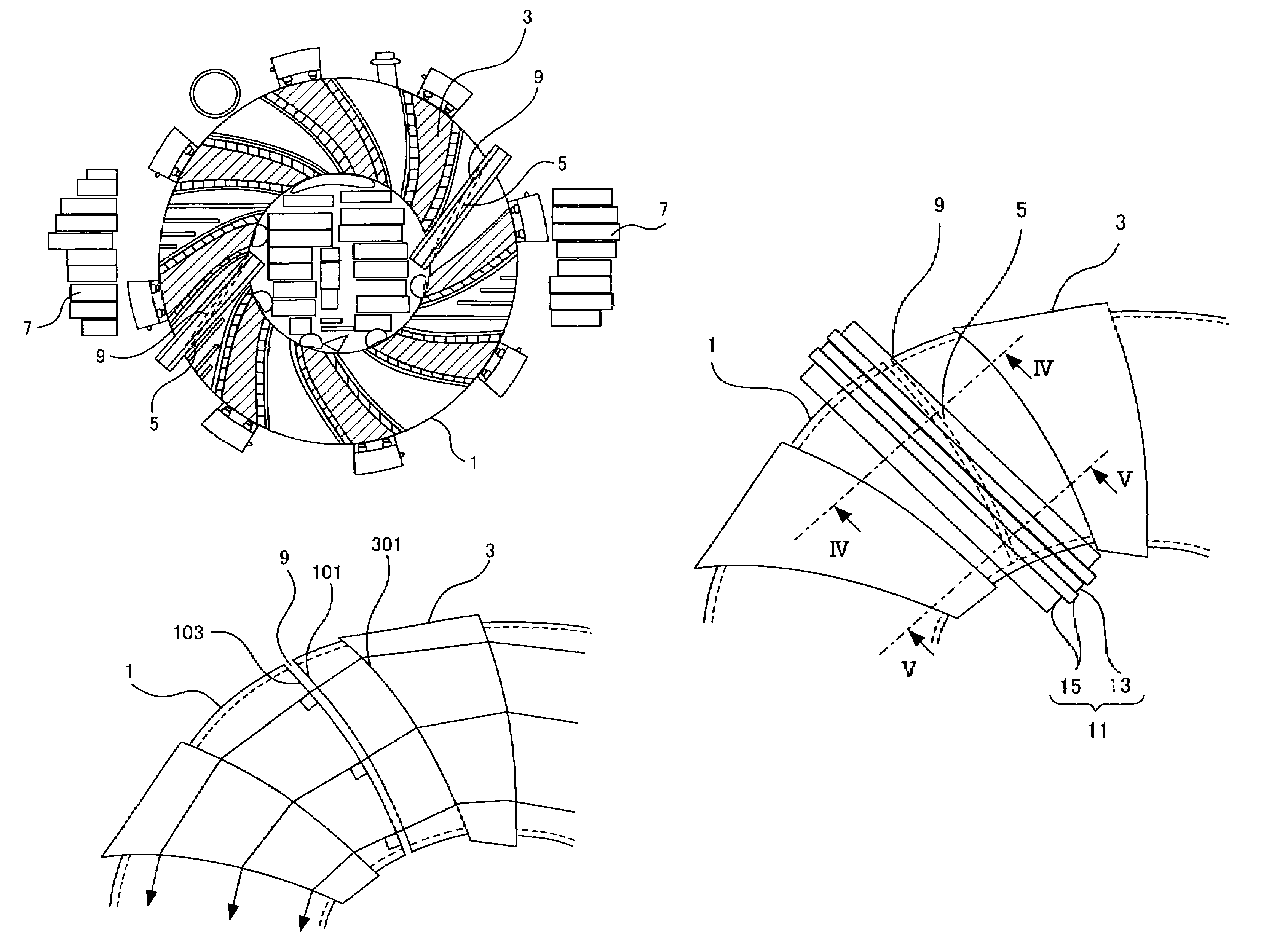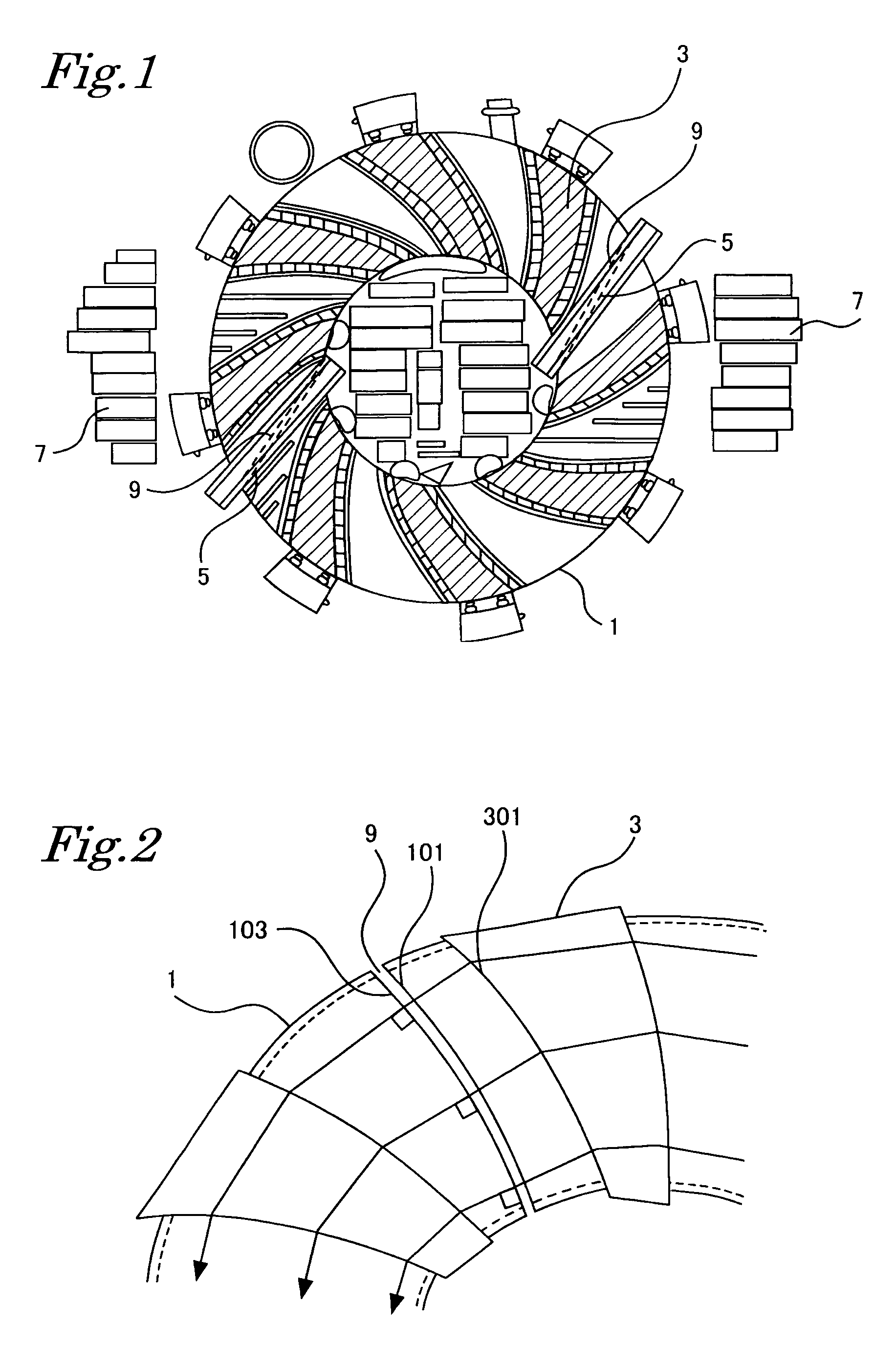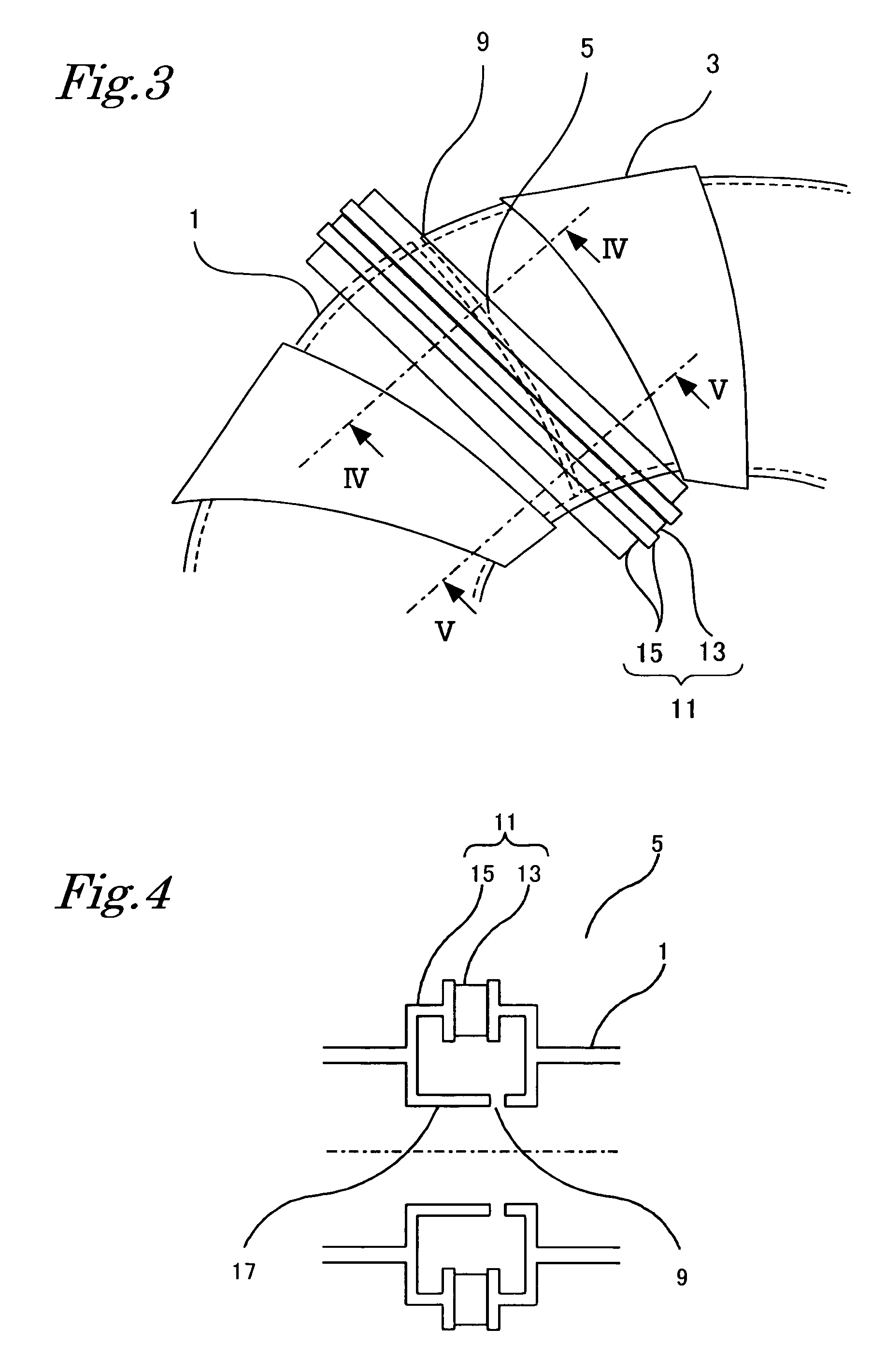Particle beam accelerator
a particle beam and accelerator technology, applied in the direction of instruments, mass spectrometers, beam deviation/focusing by electric/magnetic means, etc., can solve the problems of beam loss, the inability to easily form ceramic materials in any curve, etc., and achieve the effect of reducing the loss of charged particle beams
- Summary
- Abstract
- Description
- Claims
- Application Information
AI Technical Summary
Benefits of technology
Problems solved by technology
Method used
Image
Examples
embodiment 1
[0029]FIG. 1 is a top view illustrating a configuration of a particle beam accelerator according to Embodiment 1.
[0030]As illustrated in FIG. 1, the particle beam accelerator according to Embodiment 1 mainly comprises an annular vacuum duct “1”, a plurality of spiral-shaped-deflecting electromagnets “3”, accelerating units “5”, and accelerating cores “7”.
[0031]The vacuum duct 1 is composed by piecing stainless sheets together in an annular shape, and includes, inside the duct, sealed space having a rectangular cross-section. The sealed space is maintained in vacuum state at the time of use, and used as an annular vacuum passageway for passing a charged particle beam. As described above, the annular passageway for passing the charged particle beam is formed inside the annular vacuum duct 1, and the accelerating units 5 for accelerating the charged particle beam are disposed in the vacuum duct 1.
[0032]In the vacuum duct 1, a plurality of spiral-shaped-deflecting electromagnets 3, for ...
embodiment 2
[0048]In Embodiment 1, the particle beam accelerator has a two-fold structure in which the accelerating gap is formed in a curve, and the accelerating gap is sealed by a disc insulating member made of a ceramic material and having plane main faces. In a particle beam accelerator according to Embodiment 2, however, a vacuum duct includes flanges sandwiching a resin material, so that the gap is formed between the flanges linked together via the resin material intervening. Here, other configurations are the same as those of the particle beam accelerator according to Embodiment 1.
[0049]FIG. 8 is a diagram for explaining the accelerating gap in the particle beam accelerator according to Embodiment 2. FIG. 9 is a schematic diagram illustrating periphery of the sealing member illustrated in FIG. 8. As illustrated in FIG. 8 and FIG. 9, flanges “21” are formed on the vacuum duct 1, and a resin material “23” is sandwiched between the flanges 21. As a result, a gap is formed between the flange...
embodiment 3
[0053]In Embodiment 2, the accelerating gap is formed by sandwiching the resin material 23 between the flanges 21, which have curved faces perpendicular to the beam passing orbits, via O-rings 25. In a particle beam accelerator according to Embodiment 3, however, protrusions are provided on the resin material, and the resin material is fixed to the flanges via the protrusions. Here, other configurations are the same as those of the particle beam accelerator according to Embodiment 1.
[0054]FIG. 11 is a diagram for explaining an accelerating gap in a particle beam accelerator according to Embodiment 3. The flanges 21 are formed on the vacuum duct 1 as illustrated in FIG. 7, and the resin material 23 having protrusions is sandwiched between the flanges 21.
[0055]In order to form the accelerating gap 9 as illustrated in FIG. 11, the resin material 23, such as polyimide resin material, having the protrusions, may be sandwiched between the flanges 21 cutting the vacuum duct 1 and having cu...
PUM
 Login to View More
Login to View More Abstract
Description
Claims
Application Information
 Login to View More
Login to View More - R&D
- Intellectual Property
- Life Sciences
- Materials
- Tech Scout
- Unparalleled Data Quality
- Higher Quality Content
- 60% Fewer Hallucinations
Browse by: Latest US Patents, China's latest patents, Technical Efficacy Thesaurus, Application Domain, Technology Topic, Popular Technical Reports.
© 2025 PatSnap. All rights reserved.Legal|Privacy policy|Modern Slavery Act Transparency Statement|Sitemap|About US| Contact US: help@patsnap.com



